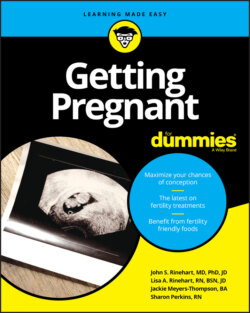Читать книгу Getting Pregnant For Dummies - Sharon Perkins - Страница 112
Taking a closer look at prescription medications
ОглавлениеWhat you put in your body may matter when you are trying to get pregnant. Taking a quick inventory of any ongoing or recent prescription drugs can identify if any of these are getting in your way:
Has your partner taken antibiotics, such as erythromycin or gentamycin, or antifungal medications, such as ketoconazole, or been treated for psoriasis with methotrexate? Has he been on anabolic steroids? These medicines can all affect sperm production.
Do you or your partner take medication for high blood pressure? Sometimes, when you’ve been taking a medication for a long time, you almost forget that it can have serious side effects. Men who take certain types of antihypertensives called calcium channel blockers may produce sperm that can’t penetrate eggs well; other high blood pressure medications may cause retrograde ejaculation, a condition in which the semen is pushed backwards into the bladder instead of being ejaculated out; or they may cause an inability to get and sustain an erection. Some antihypertensives are dangerous in early pregnancy as they can cause birth defects. Other antihypertensive drugs are available that don’t have these effects, so talk to your doctor about switching medications if possible.
By definition, medications are substances that are prescribed and regulated by the FDA. Many medications can have a negative effect upon fertility or on a pregnancy, but there is an easy way to check the potential for problems on FDA-regulated drugs. Medications are categorized as to their effect on a pregnancy with the majority being either category B (okay to use) or category C (use only if benefit outweighs risk). By using this categorization system, you can determine if the medications you are taking are worth it:
Category A is for drugs that have a proven safety record backed by research on women.
Category B drugs have shown safe use in animals, but there are no well-controlled studies in humans.
Category C includes drugs where animal studies have shown an adverse effect but there are no well-controlled human studies to tell us what happens in humans. This is where a risk-benefit evaluation helps to decide if the medication should be used.
Category D is where studies have shown an adverse effect for humans but where special circumstances may warrant the use of the medication.
Category X: Well, what do you think — does X sound good? You are right — the answer is “no.” These medications have proven adverse effects on pregnancy and no amount of benefit outweighs the risk — just don’t use them.
Do not stop taking any prescription medication before discussing it with your doctor. You are on that medication for a reason!
Some of the commonly used medications for fertility treatment have very scary warnings on their labels. Do not freak out! These warnings don’t apply to your situation (or else your physician would not be prescribing them) as long as the physician knows you are trying to get pregnant.
